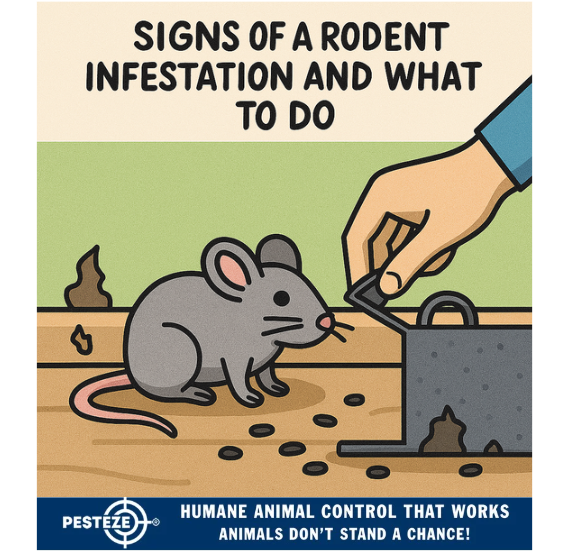SIGNS OF A RODENT INFESTATION AND WHAT TO DO

SIGNS OF A RODENT INFESTATION AND WHAT TO DO
SUMMARY
Rodents like rats and mice can silently invade your home, bringing health hazards, structural damage, and unwanted stress. Recognizing the early signs of a rodent infestation is crucial for prompt action and effective control. This guide outlines the most common indicators of rodent activity and provides actionable steps to eliminate them safely and efficiently. Whether you live in a city apartment or a suburban home, knowing what to look for and how to respond can save you time, money, and peace of mind.
FEATURES
-
Droppings and Urine Trails: Spot small, dark pellets and ammonia-like odors in hidden areas.
-
Gnaw Marks and Damage: Identify chewed wires, furniture, and food packaging.
-
Nocturnal Noises: Listen for scratching, scurrying, or squeaking sounds at night.
-
Nesting Materials: Discover shredded paper, fabric, or insulation in quiet corners.
-
Grease Trails and Footprints: Detect oily marks along walls and tiny tracks in dusty areas.
-
Unusual Pet Behavior: Notice pets acting alert or anxious near walls or furniture.
GUIDE DESCRIPTION
Rodent infestations often begin unnoticed, but the signs are there if you know where to look. Mice and rats are nocturnal creatures that thrive in hidden spaces, making early detection essential for effective control. This guide helps you identify the warning signs and take decisive action before the problem escalates.
Start by inspecting common hiding spots—behind appliances, inside cabinets, attics, basements, and crawl spaces. Droppings are one of the most obvious indicators, typically found near food sources or nesting areas. A strong, musky odor may also signal urine trails. Gnaw marks on wires, furniture, or food containers suggest active chewing, which can pose fire hazards and contaminate supplies.
Listen for sounds at night. Scratching, squeaking, or movement in walls or ceilings often points to rodent activity. Nesting materials like shredded paper or insulation are another red flag. Grease marks and footprints may appear along baseboards or dusty surfaces, revealing rodent pathways. Pets may also sense intruders—watch for unusual barking, sniffing, or agitation.
Once signs are confirmed, act quickly. Seal entry points using steel wool or caulk, set traps in high-traffic areas, and maintain strict sanitation. Store food in airtight containers and remove clutter that could serve as shelter. For severe infestations, consult a pest control professional.
By recognizing the signs and responding promptly, you can protect your home from the health risks and damage rodents bring. Prevention and early intervention are your best defenses against these unwelcome guests.
- Amy Chang


Comments 0